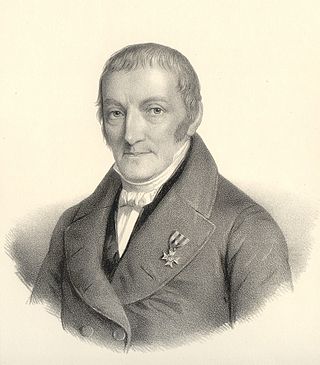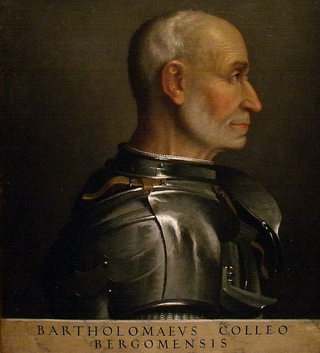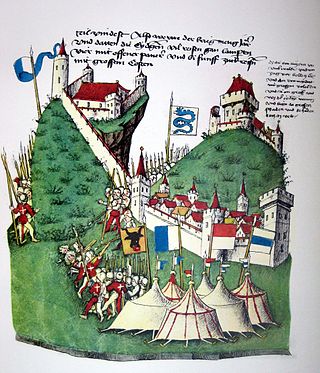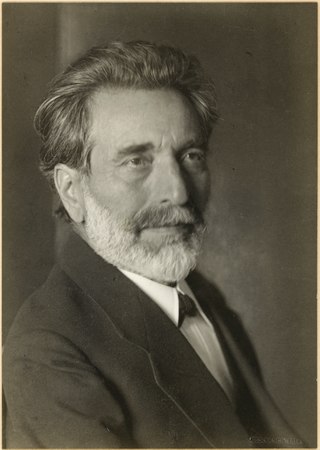
The Kingdom of Lombardy–Venetia, commonly called the "Lombardo-Venetian Kingdom", was a constituent land of the Austrian Empire from 1815 to 1866. It was created in 1815 by resolution of the Congress of Vienna in recognition of the Austrian House of Habsburg-Lorraine's rights to the former Duchy of Milan and the former Republic of Venice after the Napoleonic Kingdom of Italy, proclaimed in 1805, had collapsed.

The Battle of Curzola was a naval battle fought on 9 September 1298 between the Genoese and Venetian navies. It was a disaster for Venice, a major setback among the many battles fought in the 13th and 14th centuries between Pisa, Genoa, and Venice in a long series of wars for the control of Mediterranean and Levantine trade.

Karl Ludwig von Haller was a Swiss jurist, statesman and political philosopher. He was the author of Restauration der Staatswissenschaft, a book which gave its namesake to the Restoration period after the Congress of Vienna, and which Georg Wilhelm Friedrich Hegel strongly criticized in §258 of Elements of the Philosophy of Right.

Hans Waldmann was mayor of Zurich and a Swiss military leader. Born in Blickensdorf near Zug, he married well and became Squire of Dubelstein. He served as Mayor of Zurich between 1483–1489 and was beheaded on the 6 April 1489 following a peasant revolt.

The Ten Days of Brescia was a revolt which broke out in the northern Italian city of that name, which lasted from 23 March to 1 April 1849.

The Battle of Bosco Marengo(aka Battle of Frascata) was fought in the autumn of 1447.

The Battle of Arbedo was fought on 30 June 1422 between the Duchy of Milan and the Swiss Confederation, and ended with a Milanese victory.

The Five Days of Milan was an insurrection and a major event in the Revolutionary Year of 1848 that started the First Italian War of Independence. On 18 March, a rebellion arose in the city of Milan which in five days of street fighting drove Marshal Radetzky and his Austrian soldiers from the city.

The naval battle of Ponza was fought in early August 1435, when the Duke of Milan dispatched the Genoese navy to relieve the besieged town of Gaeta, which was currently under threat from the King of Aragon.

The Battle of Cassano was fought in the Autumn of 1259 between Guelph and Ghibelline armies in Northern Italy.

The Battle of Ölper took place on 1 August 1809 in Ölper, currently a district of the town of Brunswick, as part of the War of the Fifth Coalition. It pitched troops of the Kingdom of Westphalia against the Black Brunswickers under Frederick William, Duke of Brunswick-Wolfenbüttel, but ended in a tactical draw.
The Battle of Motta was fought in late August 1412 when an invading army of Hungarians, Germans and Croats led by Pippo Spano and Voivode Miklós Marczali attacked the Venetian positions at Motta in Italy and suffered a heavy defeat.
The following is a timeline of the history of the municipality of Bern, Switzerland.

The Jewish Museum of Switzerland in Basel provides an overview of the religious and everyday history of the Jews in Basel and Switzerland using objects of ritual, art and everyday culture from the Middle Ages to the present.

Marc Kocher is a Swiss architect, known for his residential building designs.
The history of the Jews in Zürich dates back to at least the Middle Ages. Since the early 20th century, Zürich, Switzerland, has been among the Swiss cities where Judaism is most prevalent.

Haruthiun Tigran Abeljanz was a Swiss-Armenian chemist.

Johann Jakob Meyer was a Swiss editor and journalist.















